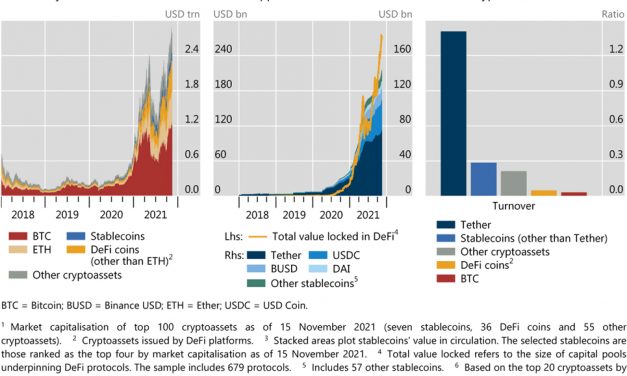Stablecoin projects need collaboration, not competition: Frax founder
Stablecoin projects need to take a more collaborative approach to grow each other’s liquidity and the ecosystem as a whole, says Sam Kazemian, the founder of Frax Finance.Speaking to Cointelegraph, Kazemian explained that as long as stablecoin “liquidity is growing proportionally with each other” through shared liquidity pools and collateral schemes, there won’t ever be true competition between stablecoins. Kazemian’s FRAX stablecoin is a fractional-algorithmic stablecoin with parts of its supply backed by collateral and other parts backed algorithmically. Kazemian explained that growth in the stablecoin ecosystem is not a “zero-sum game” as each token is increasingly intertwined and reliant on each other’s performance. FRAX uses Circle’s USD Coin (USDC) as a portion of its collateral. DAI, a decentralized stablecoin maintained by the Maker Protocol, also uses USDC as collateral for more than half of the tokens in circulation. As FRAX and DAI continue to expand their market caps, they will likely need more USDC collateral.However, Kazemian pointed out that if one project decides to dump another, it could have negative effects on the ecosystem.“It’s not a popular thing to say, but if Maker dumped its USDC, it would be bad for Circle because of the yield they’re earning from them.”USDC is keyThe current top three stablecoins by marketcap in order from the top are Tether (USDT), USDC, and Binance USD (BUSD). DAI and FRAX are both decentralized stablecoins that take the fourth and fifth places among the top.USDC has had the largest growth over the past year of all three, with market cap more than doubling last July to $55 billion, bringing it nearly within arm’s reach of USDT according to CoinGecko.Kazemian feels that USDC’s proliferation across the industry and arguably greater transparency about its reserves should make it the most valuable stablecoin for collaboration within the ecosystem. He called USDC a “low-risk and low-innovation project,” and acknowledged that it serves as the base layer for further innovation from other stablecoins. He said:“We and DAI are the innovation layer on top of USDC, like the decentralized bank on top of a classical bank.”Algo stablecoins don’t workThough the FRAX stablecoin is partially stabilized algorithmically, Kazemian says that pure algorithmic stablecoins ”just don’t work.”Algorithmic stablecoins like Terra USD (UST), which collapsed in a dramatic fashion in May, maintain their peg through complicated algorithms that adjust supply based on market conditions rather than traditional collateral.“In order to have a decentralized on-chain stablecoin it needs to have collateral. Doesn’t need to be overcollateralized like Maker, but it needs exogenous collateral.”The death spiral in Terra’s ecosystem became evident when UST, which is now known as USTC, lost its peg. The protocol started minting new LUNA tokens to ensure there were enough tokens backing the stablecoin. Rapid minting drove down the price of LUNA, now known as LUNC, which sparked a complete retail sell-off of tokens, dooming any hopes of re-peg.Related: Liquidity protocol uses stablecoins to ensure zero impermanent lossIn the weeks leading up to the UST depeg, Terraform Labs founder Do Kwon stated that his project needed to fractionally back the stablecoin with different forms of collateral, especially BTC. “At the end, even Terra realized that their model wouldn’t work,” Kazemian added, “so they started buying up other tokens.”By the end of May, Terra had sold nearly all of its $3.5 billion worth of BTC.Terra took down other projects in its wake, including fellow algo stablecoin DEI from Deus Finance, which also has failed to return to the dollar peg as of the time of writing.
Čítaj viac





